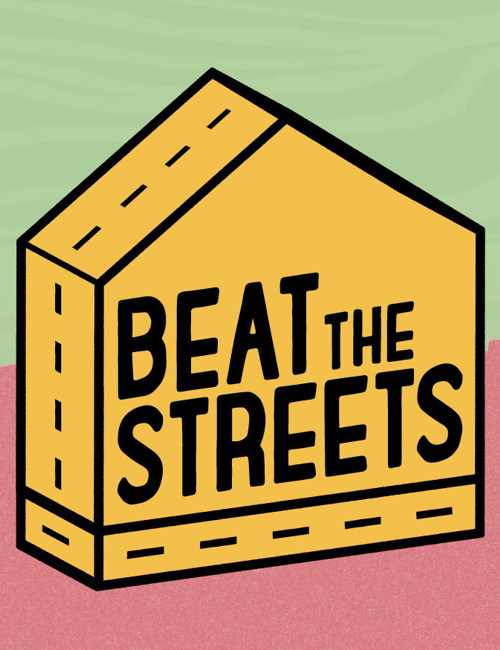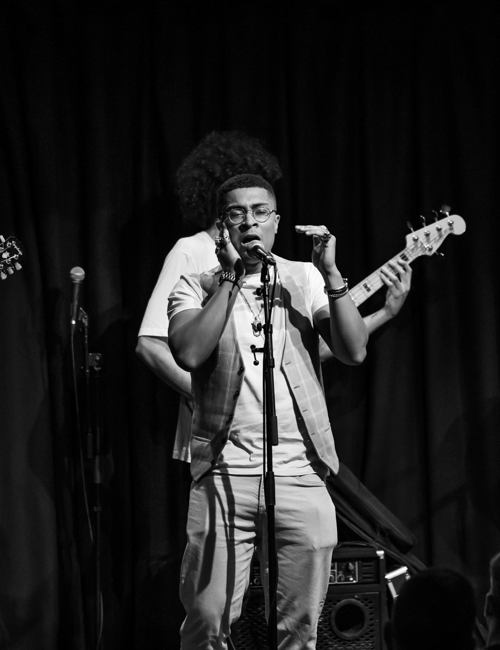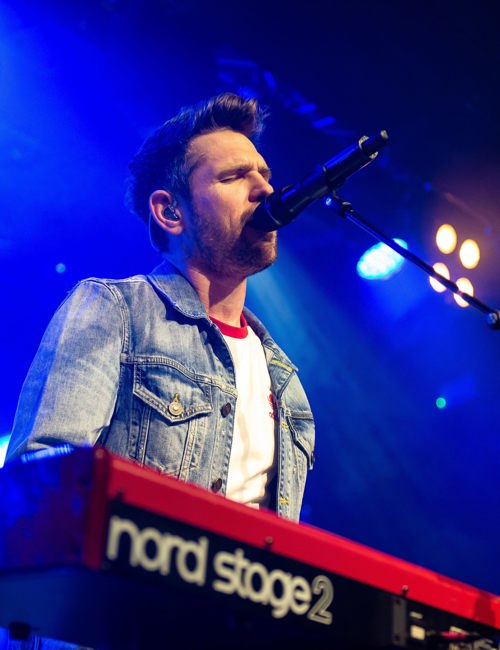Originally designed to soundtrack Wolfgang Buttress’ beehive pavilion at the World Expo in Milan in 2015, One has since been released as a critically acclaimed album...

Originally designed to soundtrack Wolfgang Buttress’ beehive pavilion at the World Expo in Milan in 2015, One has since been released as a critically acclaimed album. Be, the band put together to perform the music live and features members of Spiritualized, have since appeared at various shows around the UK including Glastonbury and End of the Road festivals.
The band originally debuted their performance of One here in Nottingham at Nottingham Arts Theatre with two live shows at the start of 2016. They are now returning to perform it, plus brand new music, at St Mary’s Church in the heart of the Lace Market, an event that will feature the sounds and vibrations from over 40,000 honeybees streamed live into the church from a local beehive in Brackenhurst. Paul Klotschkow sat down with Wolfgang just before the band’s recent instore appearance at Rough Trade Nottingham to catch up on almost twelve months of Be…
It’s almost a year on from the first Be performances...
It’s been incredible; it’s just blossomed into this thing that none of us anticipated or dreamed of. It was a soundscape designed to go with the Hive– we were really pleased with it and wanted to document it because after the expo finished it wouldn’t be there anymore and it would have just been a memory. When Jeff Barrett wanted to release it I thought that it might sell twenty copies or something. It seems to have struck a chord and keeps going. Since those two sold-out Nottingham shows there’s been loads of support from BBC – Mary Anne Hobbs, Lauren Laverne, Jarvis Cocker – it’s just been insane.
You never planned for Be to be a touring band?
We always thought it would be nice to play it live. Then we thought it would be great to do it in Nottingham. Playing live at the Hive in Milan was impractical, so when Hive went to Kew I thought that would be a fantastic thing to do. And it was amazing; a highlight of the year, if not my entire life in a lot of ways. We had the whole team – the musicians, the sound people we had in Milan, Spool from Nottingham – it was like the family had come together. I was really conscious that the performances shouldn’t be too big, so there was only a few hundred people at each show. It was quite intimate in a way. We played behind the gauze, had a stream of bees from Kew. It was the end of September, but the weather gods were smiling down on us, it was really warm. It was magical, one of those moments you will never forget.
In terms of performing the music live, has the piece changed since the first shows in Nottingham?
The Arts Theatre was an opportunity to recreate the record from start to finish, even though there were parts that were different and we were reacting to the bees. The way that it has evolved over the summer, the dynamics have changed the music slightly, we have more musicians involved. For us, what’s important about coming back to Nottingham is not to recreate those shows, there would be no point, we want to push it a bit more. Dr Martin Bencsik is currently discovering some new bee communications, so we are working with them and it has inspired two or three new tracks. I thought it would be lovely to be right in the city centre, and I suppose there is an analogy between a church and a hive.
What can we expect from the St Mary’s Church performance?
The album is quite calm and meditative in a lot of ways and a church has that kind of atmosphere. St Mary’s choir will be performing live with us. I’ve been working with the perfume makers and scientists Haeckels, and the idea is to take it to another sensory level; we will be using smell in these performances. They have created a scent of St Mary’s using the botanicals in the garden and graveyard; then mixing the essence of that with honey, so you have honey and these botanicals. It is a really amazing smell that will be dispersed. We have also made these candles that contain the essence of St Mary’s that will also illuminate the space. The choir will be behind the gauze with the musicians and towards the end they will walk out and surround the audience. It’ll be a fully immersive experience. It’s the week before Christmas and it feels that it has been a tough and hard year. For us it is a way to do something really positive at the end of the year with an idea of hope and bringing people together.
It’s like a mass in a lot of ways…
Yes, like a secular mass!
Going back to the music. You’ve said that you’ve been recording more music based on new bee research…
Martin is still in the process of proving it, but he believes that it is the sound of the female worker bee talking to the unborn larva. He has these signals that he is in the process of investigating and proving. Again, the sounds are just incredible. That inspired a whole set of tracks – we’ve just released a deluxe version of the album with three extra tracks. The piano refrain on Two Feet Of Snow is one of the first things that we did when starting One, so it influenced the whole atmosphere but we never ended up using it. The Swarm [displayed at Floor 1.5 of Rough Trade] is more of an art piece. Dr Martin Bencsik put some accelerometers inside a beehive in France and we believe it is the first time the sound of a beehive about to swarm has been captured. It is an incredible sound, it starts calm and then peaks with this kind of madness; it’s quite orgasmic in a way. We put this drone underneath it. That track forms the basis of a little installation in Rough Trade.
Is the Hive at Kew an exact replica of what visitors would have experienced in Milan, Italy, or have you had to make modifications?
The Hive itself is exactly the same but I redesigned the landscape. In Milan we were cheek-by-jowl with other pavilions – I didn’t know what the context would be until I got there, apart from the sky. Whereas in Kew, we picked where we wanted it to be. We carved a big C-section out of a hill. You walk up a wildflower meadow and then into the structure itself. It’s the same concept, the Hive is intrinsically linked to this wildflower meadow, but it’s the shape and form that is slightly different. It was going to be a semi-permanent installation for two years but their visitor numbers have increased by 40 - 45% since, so I think it will be there until 2020. What has been interesting to me, and maybe good for Kew, is how the soundscape kind of makes sense of it. I suppose on its own it kind of looks nice to look at, but until you sense it, feel it, you get the energy and sense that it is kind of fluid. I think it has attracted a new audience to Kew as well, people going down there because they heard about the soundscape and the music. I think Kew are happy about that as it’s opened them up to a new audience.
Are the up-coming performances at St Mary’s the end for Be?
We have been asked to do a couple of things next year. It would be nice to play Kew again at some point. At the moment we see these Christmas shows as a bookend to it. There may be some occasional forays working with the bees. I’m working with the same musicians, like Tony Foster and Kev Bales, on a couple of new soundscape projects. There is one project in Taiwan working with signals from space that will trigger the soundscape. I’m also working on another sculpture, this time with Nottingham University at Brakenhurst. It’s related to the first ever Bramley apple tree, which is in Southwell, and how it is dying. The idea is to take a graft from it and create this new orchard, which we’ll put sensors in that will energise the sculpture with light and sound.
Is nature something that has always fascinated you?
It has, yeah. I was born in a big council estate in Birmingham and then moved to Cumbria when I was nine or ten. It was right by the sea, and the difference compared to being in a city was profound. That massively influenced me as an artist. With art and sound, it’s a way of connecting yourself back to nature. You feel more at one with nature, which I think is a positive thing. These days we are so bombarded by digital images and are so focused on the visual that we have neglected other ways how we can feel. I believe if you use senses like sound or smell, it refocuses your mind. For me, as an artist, using all of the different ways we experience things to create an atmosphere, to create meaning, is something I’m keen to explore more.
Read an interview with Wolfgang Butress and the Be musicians on LeftLion
Be performed live at St Mary’s Church, Nottingham, Saturday 16 and Sunday 17 December 2016.
We have a favour to ask
LeftLion is Nottingham’s meeting point for information about what’s going on in our city, from the established organisations to the grassroots. We want to keep what we do free to all to access, but increasingly we are relying on revenue from our readers to continue. Can you spare a few quid each month to support us?




